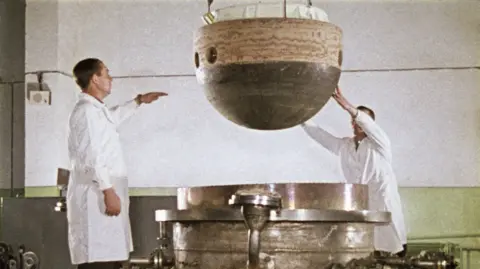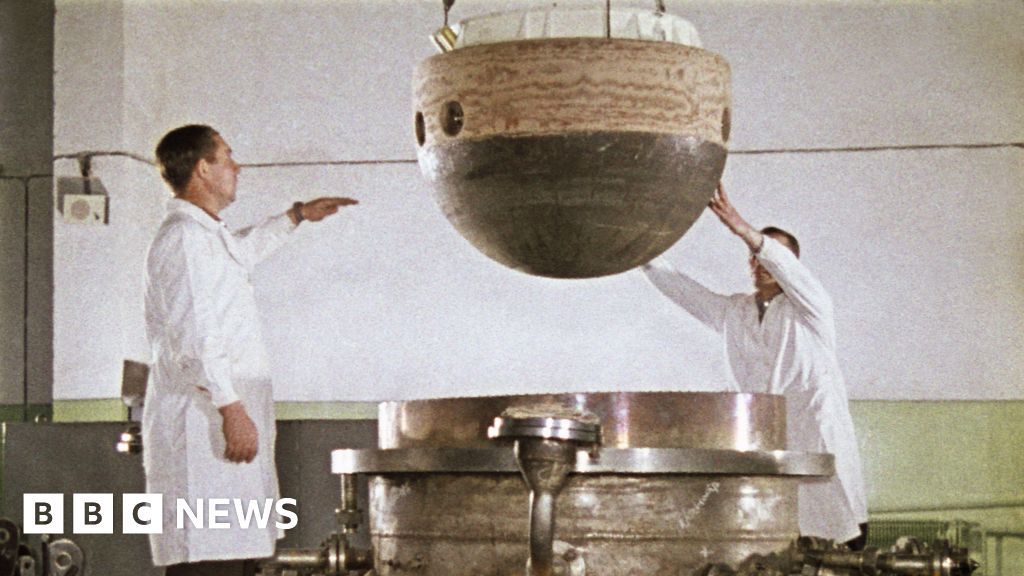Climate & Science reporter
 Getty Images
Getty ImagesPart of a Soviet-era spacecraft is likely to have re-entered the Earth’s atmosphere after being stuck in orbit for over half a century, the European Space Agency said.
Kosmos 482, which launched in 1972 on a mission to Venus, never made it out of Earth’s orbit and instead broke into four pieces that have been circling the planet for over five decades.
The EU Space Surveillance and Tracking centre (SST) said one fragment – believed to be the lander – “most likely” re-entered the atmosphere at about 06:16 GMT (07:16 BST) on Saturday.
It is unclear whether the object fell to the ground or burned up in the atmosphere.
It is also unclear exactly where the object re-entered the atmosphere.
While there is much experts do not know about the object’s re-entry, 70% of Earth is covered by sea so it is unlikely to have caused significant damage.
“It’s much more likely that you win the lottery than that you get impacted by this piece of space debris,” Stijn Lemmens, a senior analyst at the European Space Agency, said.
Kosmos 482’s lander capsule was built to survive the extreme heat and pressure of Venus’s atmosphere, meaning it had a robust heat shield and durable structure.
This is why experts think it may have survived an uncontrolled descent through Earth’s atmosphere.
However, Kosmos 482’s parachute system, originally intended to slow the lander’s descent towards Venus, is likely to have degraded after more than 50 years in space.
Mr Lemmens explained that the “re-entry of human-made objects into Earth’s atmosphere occurs quite frequently”. He said it happens weekly for bigger spacecraft and daily for smaller ones.
Objects typically burn up in the earth’s atmosphere before they reach the ground.
China’s Long March 5B booster re-entered over the Indian Ocean in 2022, and the Tiangong-1 space station mostly burned up over the Pacific in 2018.
Kosmos 482 is now being closely tracked by international space agencies.
Mr Lemmens said that future spacecraft “should be designed in such a way that they can take themselves out of orbit safely, preferably by doing controlled re-entries”.
This would allow for precise predictions of landing locations, reducing the risk of any debris impacting populated areas and protecting people and property while “managing the environmental impact of space debris”.
Anurag Dhole is a seasoned journalist and content writer with a passion for delivering timely, accurate, and engaging stories. With over 8 years of experience in digital media, she covers a wide range of topics—from breaking news and politics to business insights and cultural trends. Jane's writing style blends clarity with depth, aiming to inform and inspire readers in a fast-paced media landscape. When she’s not chasing stories, she’s likely reading investigative features or exploring local cafés for her next writing spot.







